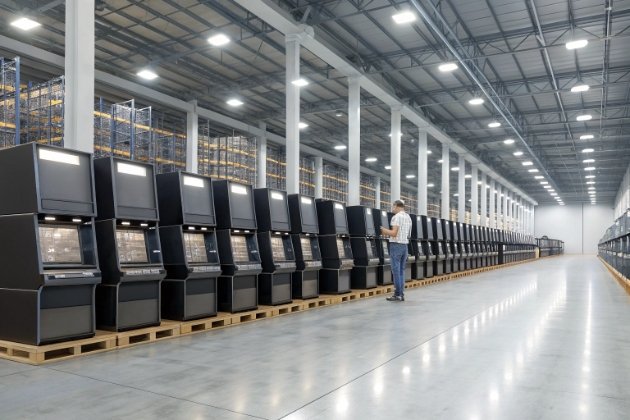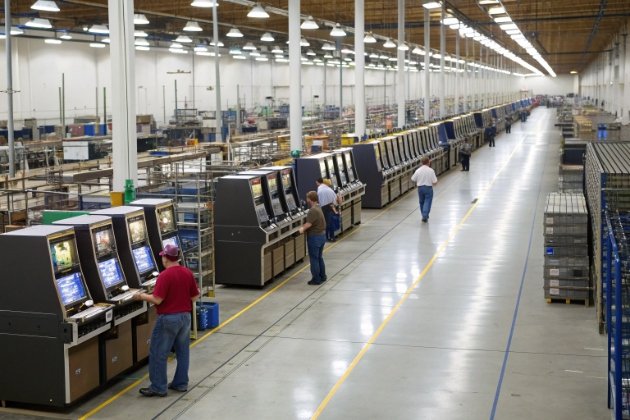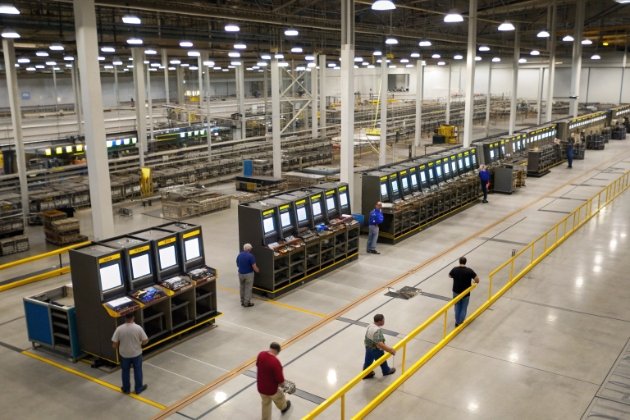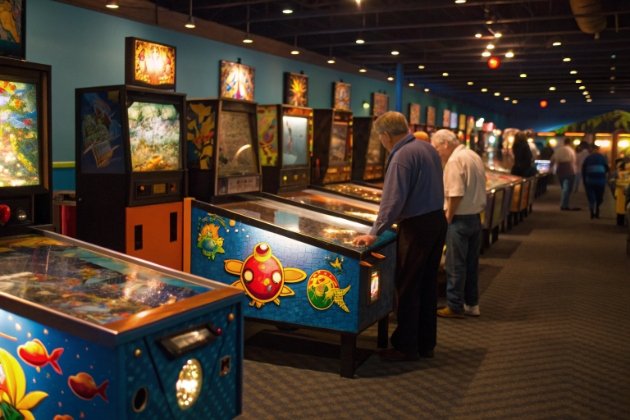I’ve talked with many venue owners who feel uncertain about when to buy in bulk — they worry about overspending or missing a good deal. I know how frustrating it can be to see others negotiate better prices while you pay retail.1
Yes, bulk purchasing of gaming cabinets usually includes flexible discount structures, tiered pricing, and negotiable terms. I always make sure clients understand how to unlock the best savings through order size, timing, and partnership terms.2
Read on to see how bulk pricing works, what minimum order quantities apply, and the smartest ways to negotiate better deals without compromising delivery or support.3
Can I negotiate for a better price on bulk orders?
I used to think bulk pricing was fixed — until I saw how flexible manufacturers really are when the order is serious. Negotiation isn’t just possible; it’s expected.4
I negotiate better prices by aligning my order volume, lead time, and customization level with the supplier’s production capacity. I emphasize long-term cooperation and transparent forecasts, which helps manufacturers offer deeper discounts.5

When negotiating, timing and information are key. Manufacturers often plan production runs in monthly or quarterly batches. If I can commit early or combine multiple models into one purchase, it allows the factory to optimize materials and labor — and that’s where discounts come from. I also build rapport with the sales manager; a trusted relationship often leads to added perks such as extended warranties, faster production slots, or waived customization fees.6
: Tips for Effective Negotiation
- Order during factory low seasons (often Q1 or post-summer).
- Combine cabinet types (upright, curved, fish tables) into a single bulk order.
- Offer to pay a small deposit upfront for priority scheduling.
- Request free accessories or spare parts as part of the deal.
| Negotiation Factor | Impact on Discount | Notes |
|---|---|---|
| Order volume | ★★★★★ | Bigger quantities = better rates |
| Payment terms | ★★★★☆ | Early or partial payment helps |
| Delivery flexibility | ★★★☆☆ | Split shipments can save costs |
| Relationship history | ★★★★☆ | Repeat clients get loyalty pricing |
By treating negotiation as collaboration, I often secure discounts of 5–20%, depending on the total order size and model mix.
How do you structure your bulk pricing?
I’ve reviewed countless supplier quotes, and the best deals always come with a transparent structure. Hidden fees kill trust.7
I structure bulk pricing using tiered quantity ranges, transparent unit costs, and clear terms for logistics and warranty coverage. I ask suppliers for a written breakdown before committing, ensuring no surprises after production.

Most factories follow a tier-based system where discounts increase with quantity. For example, an order of 10 units might earn a 5% discount, while 50 units could qualify for 15% or more. The per-unit price usually includes standard configuration, assembly, and packaging. Optional features like upgraded displays, lighting, or custom control layouts may slightly affect the discount percentage but remain negotiable when ordered at scale.
: Typical Bulk Pricing Structure
| Quantity Range | Discount Rate | Example Price (per unit) | Notes |
|---|---|---|---|
| 5–9 units | 0–5% | $1,450 | Minimum tier |
| 10–19 units | 5–10% | $1,350 | Ideal for small venues |
| 20–49 units | 10–15% | $1,250 | Distributor-level pricing |
| 50+ units | 15–20% | $1,150 | Strategic partner tier |
Beyond price per unit, I check how other factors affect the total cost — shipping method, packaging density (how many cabinets per container), and any installation services included. For example, bulk ocean freight may reduce shipping costs by up to 40% compared with multiple LCL (less-than-container-load) shipments.
I also confirm whether accessories (coin acceptors, LED panels, monitors) are included or priced separately. Transparent communication early in the quote process helps avoid re-negotiations later.8
Is there a minimum order requirement for bulk discounts?
I’ve seen buyers miss out on savings because they didn’t know the MOQ rule. Every factory sets its own line between “sample” and “bulk.”9
Yes, most manufacturers set a minimum order quantity (MOQ) — typically starting around 10 to 20 units — to qualify for bulk discounts. I plan my order in phases if I can’t hit the full MOQ at once.

Understanding MOQ helps align cash flow and space planning. A standard MOQ of 10–20 units gives the manufacturer enough scale to optimize raw materials (metal sheets, wiring, paint batches). Orders below MOQ are often treated as samples, which carry higher per-unit costs. However, I’ve successfully negotiated phased MOQs — for example, 10 units now and 10 more next month — at the same discount rate, provided the factory has predictable workload planning.
: Strategies for MOQ Flexibility
- Combine models with shared components to reach MOQ faster.
- Partner with another distributor to create a joint order.
- Ask for a rolling MOQ contract if your venue expansion is ongoing.
- Request a price freeze for future phases if you can’t order all units now.
| MOQ Range | Typical Discount Eligibility | Common Use Case |
|---|---|---|
| <10 units | None | Trial / Sample orders |
| 10–19 units | 5–10% | Small local venues |
| 20–49 units | 10–15% | Regional distributor |
| 50+ units | 15–20% | Multi-location networks |
MOQs protect both parties — the factory ensures efficiency, and I ensure cost predictability. Once the MOQ threshold is reached, everything else becomes negotiable: lead time, logistics, warranty, and after-sales service.
Can I receive pricing details in advance?
I’ve had too many surprises from vague quotes. That’s why I demand written, itemized proposals.
Yes, detailed bulk pricing is provided in advance, including per-unit cost, applicable discounts, logistics fees, and estimated delivery timelines. I use these documents to plan my cash flow and compare suppliers accurately.10

When I request pricing, I always ask for a formal quotation (Proforma Invoice or PI) listing each model, configuration, and per-unit price. This document also specifies the discount rate, total order value, shipping method (FOB, CIF, or DDP), lead time, and warranty coverage. It becomes a mutual reference point for both parties — protecting me from sudden price changes and protecting the manufacturer from last-minute cancellations.
: Components of a Good Price Quote
- Itemized list of cabinet models and quantities.
- Unit prices with corresponding discount percentages.
- Total weight and CBM (for shipping calculations).
- Delivery schedule and estimated lead time.
- Warranty and after-sales terms clearly stated.
| Document Section | What It Includes | Why It’s Important |
|---|---|---|
| Product Breakdown | Model + configuration details | Ensures clarity |
| Price Calculation | Discount tiers, total amount | Prevents dispute |
| Shipping Info | Terms + logistics method | Plans container loading |
| Warranty Terms | Duration, coverage scope | Defines post-sale support |
Most suppliers will hold the quoted price for 15–30 days, depending on raw material stability. If steel or electronic component costs fluctuate, they’ll note it clearly. I use that window to finalize payment terms or coordinate with logistics providers. By having everything documented, I can confidently forecast expenses and avoid hidden charges.
Conclusion
Buying gaming cabinets in bulk isn’t just about saving money — it’s about planning smart.
Negotiate openly, structure transparent tier pricing, respect MOQ rules, and always request advance documentation.
With clear communication, bulk orders can deliver better margins, smoother logistics, and long-term supplier trust.
Footnotes
- Bulk buying lowers average cost. ↩
- Flexible terms boost value. ↩
- Bulk deals need planning. ↩
- Negotiation is part of bulk trade. ↩
- Forecasts improve factory offers. ↩
- Timing can unlock deeper discounts. ↩
- Transparency builds trust fast. ↩
- Clarify accessories in pricing. ↩
- MOQ defines bulk thresholds. ↩
- Advance quotes prevent surprises. ↩



